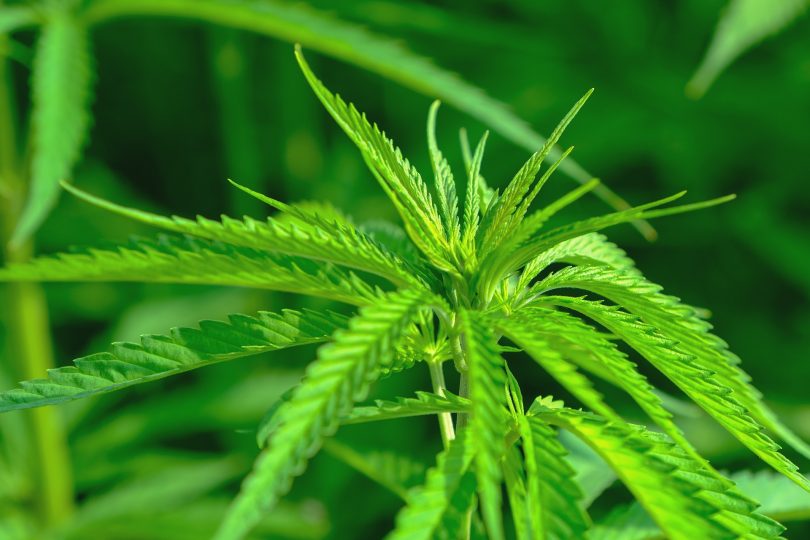By now, plenty of people are familiar with THC, CBD and all the potential medical benefits that these cannabinoids exhibit. After all, they are the two most abundant cannabinoids found within the cannabis plant.
But what may not be as commonly understood are all of the other dozens of cannabinoids present in the plant, which may also have their own place in the world of medicine and health.
So, what are some of these other ‘minor’ cannabinoids, and what purposes do they serve?
Cannabigerol (CBG)
Cannabigerol is nowhere near as abundant as THC or CBD and is typically present in concentrations of no more than 1%. Like CBD, CBG does not have any psychoactive properties, so it will not get consumers “high.” In fact, CBG is the parent cannabinoid of CBD, as well as THC.
CBG has been shown to be potentially effective in reducing ocular pressure in the eye, [1] meaning it may be a viable treatment for alleviating the symptoms of glaucoma. It’s also been shown to be an antibacterial agent and may help to reduce muscle spasticity, so it may even have a place in treating diseases of the nervous system. [2]
Cannabinol (CBN)
Cannabinol is known to be a sedative cannabinoid, so it may be helpful in alleviating anxiety and stress. CBN is the end product of THC that has been left to age and be exposed to a lot of oxygen. That said, CBN does not produce much in the way of psychoactive effects.
Current research suggests that this cannabinoid has potential as a sleeping aid, especially when used with other cannabinoids. It may also be an effective treatment for psoriasis when used in conjunction with CBD and CBG [3] and may also have antibacterial and anti-inflammatory properties.
Cannabichromene (CBC)
Cannabichromene is also a non-psychoactive cannabinoid that has exhibited the ability to help deal with pain in the body. Studies have also shown that CBC may help to accelerate the production of neurons in stem cells [4] and may also have antifungal and antibacterial properties.
Cannabidivarin (CBDV)
Cannabidivarin is molecularly similar to CBD and is also a non-mind-altering cannabinoid. Though it can be difficult to find strains with more than just tiny traces of CBDV, it may be valuable in the medical world because of its potential to reduce epileptic seizures. [5] There is also some evidence to suggest that CBDV may also help to relieve nausea. [6]
Tetrahydrocannabivarin (THCV)
Tetrahydrocannabivarin is similar in structure to THC, but varies drastically in its effect on appetite. While THC is well known for its ability to increase appetite, THCV may actually act to suppress it. One study has also linked THCV to the potential ability to regulate blood glucose and insulin levels. [7]
There are plenty of other minor cannabinoids in the cannabis plant, many of which have not yet undergone much research to determine their effects. As cannabis continues to gain traction in the world of medicine, time will tell how much potential the plant and all its cannabinoids can have on our health.
References:
- Szczesniak, A.M., et al, “Nonpsychotropic cannabinoids, abnormal cannabidiol and canabigerol-dimethyl heptyl, act at novel cannabinoid receptors to reduce intraocular pressure”, Journal of Ocular Pharmacology and Therapeutics, October 2011, Vol. 27(5), pp.427-35.
- Williamson, E.M. & Evans, F.J., “Cannabinoids in clinical practice“, Drugs, December 2000, Vol. 60(6), pp.1303-14.
- Russo, E.B., “Taming THC: potential cannabis synergy and phytocannabinoid-terpenoid entourage effects“, British Journal of Pharmacology, 2011.
- Shinjyo, N & Do Marzo, V., “The effect of cannabichromene on adult neural stem/progenitor cells”, Neurochemistry International, Vol. 63, pp.432-437
- Amada, N. et al, “Cannabidivarin (CBDV) suppresses pentylenetetrazole (PTZ)-induced increases in epilepsy-related gene expression“, Peer J, November 2013.
- Rock, E.M., et al, “Evaluation of the potential of the phytocannabinoids, cannabidivarin (CBDV) and Δ(9) -tetrahydrocannabivarin (THCV), to produce CB1 receptor inverse agonism symptoms of nausea in rats“, British Journal of Pharmacology, October 2013, Vol. 170(3), pp.671-8.
- Jadoon, K.H. et al, “Efficacy and Safety of Cannabidiol and Tetrahydrocannabivarin on Glycemic and Lipid Parameters in Patients With Type 2 Diabetes: A Randomized, Double-Blind, Placebo-Controlled, Parallel Group Pilot Study”, Diabetes Care, October 2019, Vol. 39, pp.1777-1786










